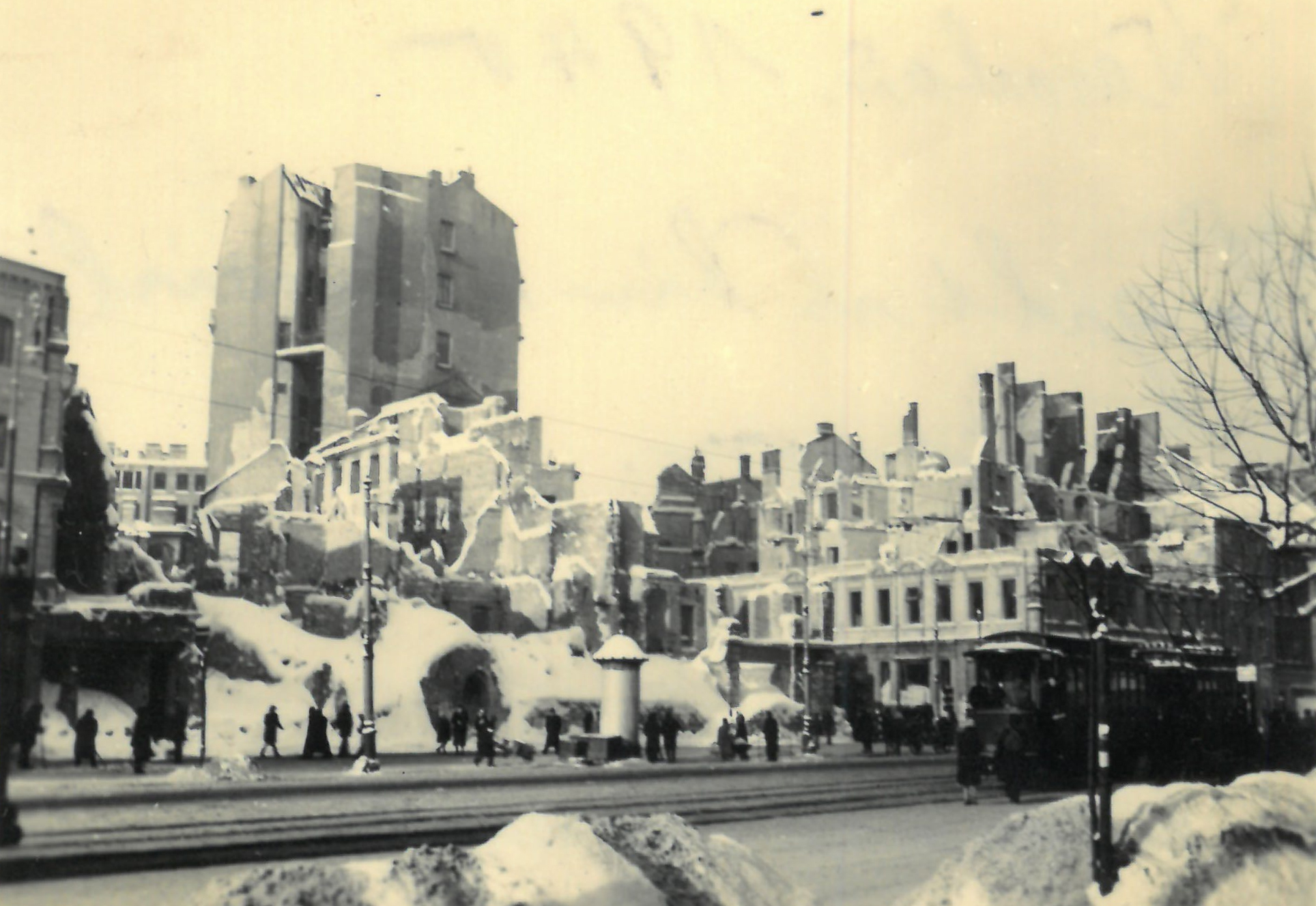
Zdjęcie przedstawia Warszawę w 1940 r.
Warsaw suffered particularly heavy losses during World War II compared to the whole of Poland and other European cities. The effects of these losses were felt for decades, says PAP's Józef Menes, a member of the ISW Council and co-author of a report on Warsaw's wartime losses in 2004-2005.
On 1 August 1944, upon hearing that an uprising had broken out in Warsaw, a decision was made in Berlin to completely destroy the city and murder all its inhabitants. According to the testimony of the German criminal SS-Obergruppenführer Erich von dem Bach-Zelewski, who was appointed commander of the forces assigned to suppress the uprising, Hitler's verbal order probably read: "Every inhabitant is to be killed, no prisoners are to be taken, Warsaw is to be razed to the ground and in this way an intimidating example is to be set for the whole of Europe". This was a consequence of earlier assumptions of German policy, the manifestation of which included Hitler's statement a few months earlier. "Warsaw must be destroyed as soon as the opportunity arises" decided the leader of the Third Reich on 6 February 1944.
German extermination
Confirmation of the implementation of these objectives was provided, among other things, by the Wola slaughter. Its aim was not only to suppress Warsaw's inhabitants' will to fight, but also to achieve one of the goals of the ideology of German National Socialism. As noted by the creator of the concept of genocide, Raphael Lemkin, the policy of the Third Reich was to achieve biological superiority, which would mean victory, even in the event of defeat in the war that was just being waged. Thus, the conflict was becoming a total war, in which one of the main means could be mass crimes of genocide. The order to murder all the inhabitants of Warsaw was carried out during the first few days of the uprising. Much longer and more consistently, the idea of the total destruction of the city, planned from the beginning of the war, was implemented.
The largest attempt until 2022 to summarise the effects of German policy towards Warsaw was the "Report on Warsaw's Wartime Losses", prepared on the initiative of the then Warsaw Mayor, Lech Kaczyński. On several hundred pages, the losses were enumerated in the areas of real estate, historical monuments, and movable name public transport components, among others.
It was estimated at the time that the material losses suffered by the city as a result of the occupying forces' actions amounted to $45.3 billion. Among others, Jozef Menes worked in the Team for Establishing the Value of the Losses that Warsaw Suffered as a Result of the Second World War. He was its secretary from 2004 to 2005. "The initiative of the then mayor of Warsaw, Lech Kaczyński, was a reaction to the intensification of actions and claims against Poland put forward by the German Federation of Expellees. In April 2004, a team of 20 people was set up and the budget necessary for its functioning was allocated, The first, abridged version of the report was published at the end of 2004. The full version was distributed to public and university libraries after its presentation on 5 October 2005, on the anniversary of the Wehrmacht parade in Warsaw, which was received by Hitler" Menes recalled.
He added that Lech Kaczyński's initiative was "completely innovative, as no one had tried to undertake this kind of estimate for the past several decades". He noted that the report dealt only with material losses and its compilation required the creation of a special methodology, e.g. determining the cost of construction in 1939 and converting this value into the value of a zloty in 2004. He added that more complicated calculations were required to determine the losses of Warsaw's industrial plants.
Capital destroyed in stages
Jozef Menes said that an important part of the report was also to determine the scale of the city's losses during the different periods of World War II. Warsaw was destroyed in three stages: in September 1939 the loss of buildings amounted to about 10% of the total, after the Warsaw Ghetto Uprising: 15%, during the fighting of the Warsaw Uprising 25%, while by the end of 1944, i.e. after the uprising: 30%. The greatest damage was therefore in the billions of zlotys at 1939 values - explains the co-author of the report. As emphasised in the report, the Germans' actions had only ideological justification, and were not motivated by "tactical objectives or strategic military necessity".
Referring to the size of Warsaw's human losses, which the report, prepared during the Warsaw presidency of Lech Kaczyński, did not cover, Józef Menes cited data from a 2022 report prepared by the Institute of War Losses, according to which around 700,000 of the city's inhabitants died during the war. As a result of military operations, namely in September 1939 and the Warsaw Uprising, a total of around 40,000 city residents died. "This is a number that is disproportionate to the total number of victims, which proves that the Germans were committing genocide and war crimes" Menes explained, adding that the victims of the exodus from the city after the surrender of the Warsaw Uprising should also be remembered. He recalled that a large proportion of the exiled residents were sent to concentration camps (45,000 victims) and slave labour camps (52,000 victims).
Assessing the contents of the 2022 report, Jozef Menes said that "it is a comprehensive report" containing not only calculations of the magnitude of the losses, but also of the hypothetical increase in GDP if the Second World War and occupation had not occurred. "It is a snapshot of the country's losses and how far Poland has been set back in its development" he stressed. In this context, he recalled that pre-war Warsaw concentrated almost 40% of pre-war Polish industry and it was only in the 1960s that the production value of Warsaw's industry reached pre-war levels.
"Warsaw suffered particularly heavy losses during World War II compared to the whole of Poland and other European cities. The effects of these losses were felt for decades" concluded Menes. (PAP)
Author: Michał Szukała.
The article comes from the website of Polskiej Agencji Prasowej.
